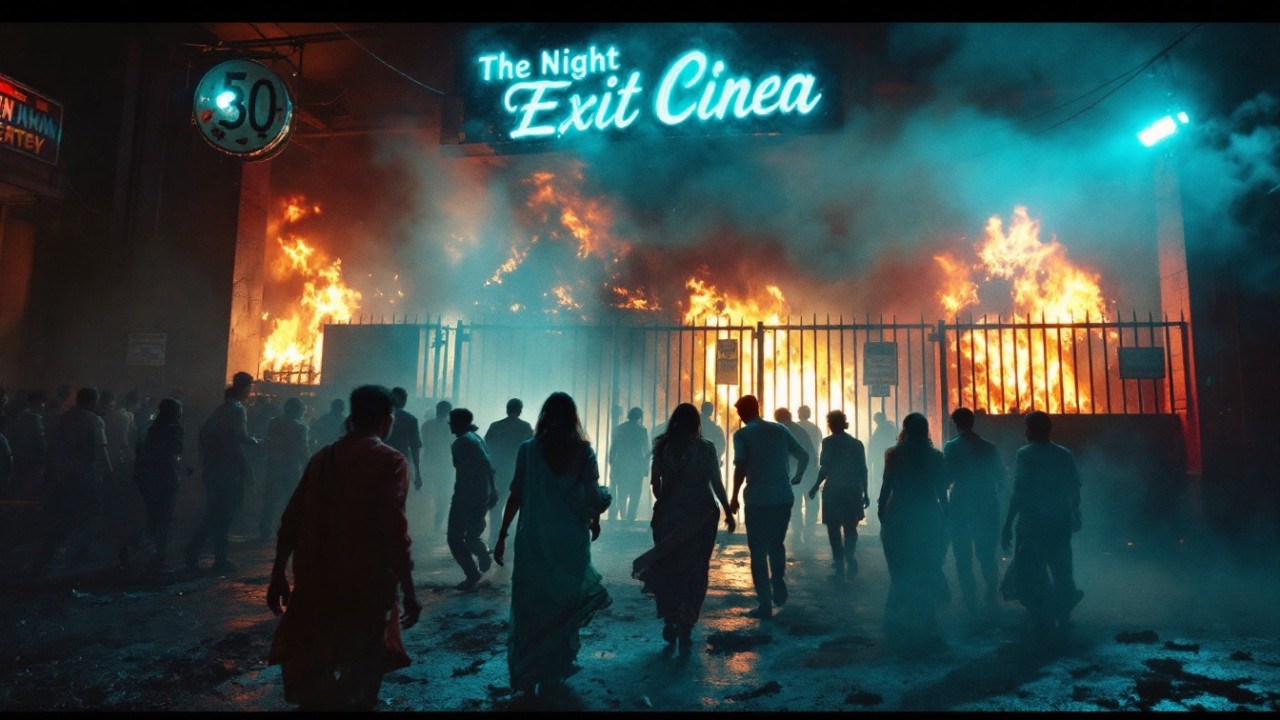🔍 A Landmark Judgment on Corporate Negligence, Victim Rights & Institutional Responsibility
✍️ By Dr. Payal Arya Sah
📌 Case Title:
Sushil Ansal & Gopal Ansal v. State (Uphaar Cinema Fire Case) Jurisdiction: Delhi High Court | With final developments before the Supreme Court of India Timeline: Incident on 13 June 1997 | Legal proceedings stretched till 2021
🗓️ The Day Delhi Burned: Background of the Case
On 13 June 1997, as the matinee show of Border played at Uphaar Cinema, a fire sparked by a transformer blast in the building's basement claimed 59 innocent lives. The victims, including children and elderly persons, died not just due to fire but also due to suffocation and a lack of emergency response.
Emergency exits were locked or blocked, warning systems were non-functional, and crowd control mechanisms were non-existent. The cinema, owned by real estate developers Sushil and Gopal Ansal, was later found to have violated multiple fire safety and building code regulations.
What began as a tragic fire incident soon became a landmark legal battle exposing the dark nexus of private greed, civic apathy, and regulatory silence.
⚖️ Key Legal Issues Addressed
The Uphaar fire case raised several crucial questions before the Indian judiciary:
- Can corporate owners be held criminally liable for negligence leading to mass death?
- What are the standards of care expected from public commercial establishments under law?
- What is the quantum and mechanism of compensating victims in mass disaster cases?
- Can tampering with evidence be punished even decades after the trial begins?
The case brought to the forefront the convergence of criminal law, tort law, evidence law, and constitutional rights, especially Article 21 – the right to life.
🧑⚖️ Delhi High Court Verdict: Justice in a Long Legal Winter
In its well-reasoned judgment, the Delhi High Court found the Ansal brothers guilty of:
· Negligence under Section 304A IPC
· Causing hurt and endangerment under Sections 337 & 338 IPC
The Court awarded exemplary compensation, recognising both the monetary and dignitarian loss suffered by the families:
· ₹18 lakh for each deceased adult
· ₹15 lakh for each deceased child
· ₹1 lakh to each injured survivor
It held that commercial interests cannot override public duty of care, and that failure to implement basic safety norms in a crowded cinema amounted to criminal recklessness.
This ruling became a benchmark for civil and criminal liability in disaster cases, moving beyond symbolic penalties to meaningful restitution.
🏛️ Supreme Court Developments: Delayed but Not Denied
While the Delhi High Court judgment was hailed as a victory, the Supreme CoCourt's015 decision to release the Ansal brothers, citing their old age, caused widespread public disappointment. In exchange, they were ordered to pay a fine of ₹60 crore, earmarked for trauma centres.
However, the most critical turn came in 2021, when the Supreme Court convicted them for tampering with court records—a rare but bold decision reinforcing the sanctity of the justice process.
They were sentenced to 7 years of rigorous imprisonment under IPC Sections 201 and 120B, with Delhi's Special House Court executing the sentence and rejecting their pleas for leniency.
🔍 Broader Legal and Policy Impacts
✅ 1. Corporate Criminal Liability Redefined
This case became a cornerstone for the principle that corporate promoters and owners cannot escape liability by hiding behind legal structures. It expanded the scope of individual culpability in corporate setups, especially when public safety is compromised.
✅ 2. Compensation as a Constitutional Right
The compensation awarded laid the groundwork for institutionalising victim compensation in other cases, including rail accidents, building collapses, and industrial disasters.
✅ 3. Fire Safety Reform
After the Uphaar tragedy, several states revised municipal building laws, fire safety norms, and disaster response procedures. Regulatory agencies came under public scrutiny for failing to inspect and certify high-risk commercial structures.
✅ 4. Judicial Precedent on Tampering with Evidence
The 2021 conviction under Sections 201 and 120 B of the IPC reinforced that no one is above the law, not even wealthy, influential individuals capable of manipulating the system for decades.
🧠 Institutional Response: Rise of AVUT
In the aftermath, grieving parents like Neelam Krishnamoorthy converted their tragedy into legal activism. She founded the Association of Victims of Uphaar Tragedy (AVUT), which:
- Pressured for fair trials and appeals
- Advocated for victim-centric legislation
- Brought attention to judicial delays and systemic apathy
Her work highlighted the role of civil society in shaping criminal jurisprudence in India.
📚 Legal Provisions Involved:
- Section 304A, IPC – Causing death by negligence
- Sections 337 & 338, IPC – Endangerment and causing hurt
- Section 201, IPC – Tampering or destruction of evidence
- Section 120B, IPC – Criminal conspiracy
- Tort law principles – Compensation for wrongful death and injury
- Article 21, Constitution of India – Right to life and dignity
📑 Official Citation:
- Sushil Ansal v. State (NCT of Delhi) – CrL.A. No. 587/2007
- Related Case: Neelam Krishnamoorthy v. State (SC, 2021)
💬 Final Reflection
"The Uphaar case was not just about negligence. It was a mirror reflecting how systemic gaps—legal, administrative, and ethical—can cost lives. But it also showed that justice, however delayed, is never entirely denied when fought with courage and resilience."
As legal practitioners and social advocates, this case reinforces our collective responsibility: to ensure that law remains a tool for justice, not a shield for privilege.
👩⚖️ About the Author
Dr. Payal Arya Sah is a practising advocate and Head of Legal Services for Soldier Welfare. She works at the intersection of public law, social justice, and institutional reform. Her writings aim to bridge courtroom realities with public understanding.

